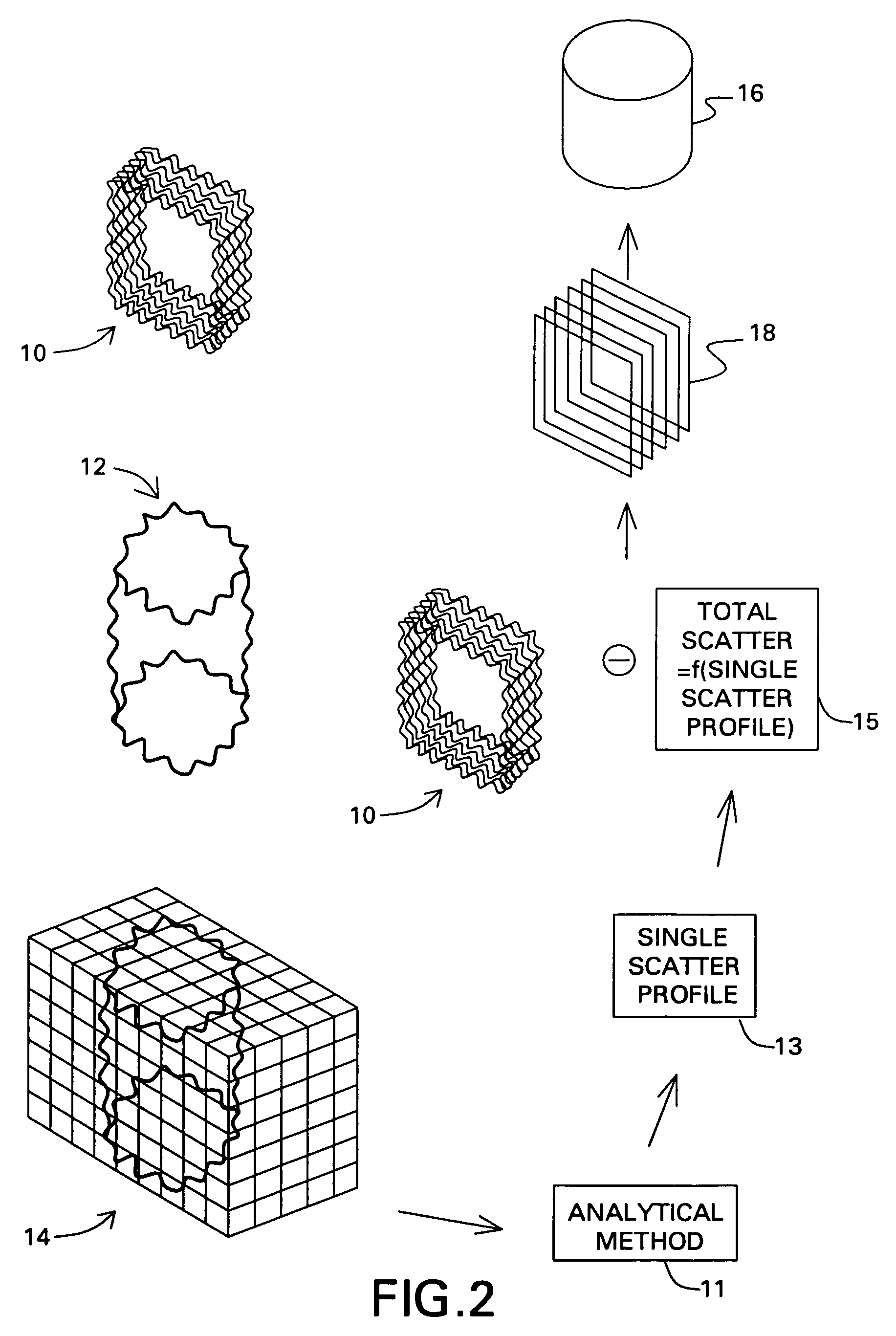Scatter and beam hardening correction in computed tomography applications
a computed tomography and beam hardening technology, applied in the field of industrial computed tomography (ct) systems, can solve the problems of reducing the accuracy of the computed tomography, requiring extensive added hardware, and producing pronounced artifacts
- Summary
- Abstract
- Description
- Claims
- Application Information
AI Technical Summary
Benefits of technology
Problems solved by technology
Method used
Image
Examples
Embodiment Construction
[0019]FIG. 1 shows an imaging system 50 for correcting scatter in an image of an object 20, according to an embodiment of the invention. At least one radiation source 40 is adapted to expose the object 20 to radiation suitable for imaging, for example, x-rays. A detector arrangement 42 is disposed with respect to the radiation source 40 to receive x-rays passing from the radiation source 40 through the object 20. The x-rays passing through the object project a two-dimensional impression, referred to as raw projection data 10, on the detector arrangement 42. A computer system 44 is coupled to the detector arrangement 42 and configured to acquire a set of raw projection data 10 from the detector arrangement 42, to generate a three dimensional (3D) image 12 from the raw projection data 10. The projection data 10 is comprised of a number of projections from different views, depending upon the application, and in some cases this number varies between 180–2500. However the number of proje...
PUM
| Property | Measurement | Unit |
|---|---|---|
| CT | aaaaa | aaaaa |
| computed tomography | aaaaa | aaaaa |
| width | aaaaa | aaaaa |
Abstract
Description
Claims
Application Information
 Login to View More
Login to View More - R&D
- Intellectual Property
- Life Sciences
- Materials
- Tech Scout
- Unparalleled Data Quality
- Higher Quality Content
- 60% Fewer Hallucinations
Browse by: Latest US Patents, China's latest patents, Technical Efficacy Thesaurus, Application Domain, Technology Topic, Popular Technical Reports.
© 2025 PatSnap. All rights reserved.Legal|Privacy policy|Modern Slavery Act Transparency Statement|Sitemap|About US| Contact US: help@patsnap.com



